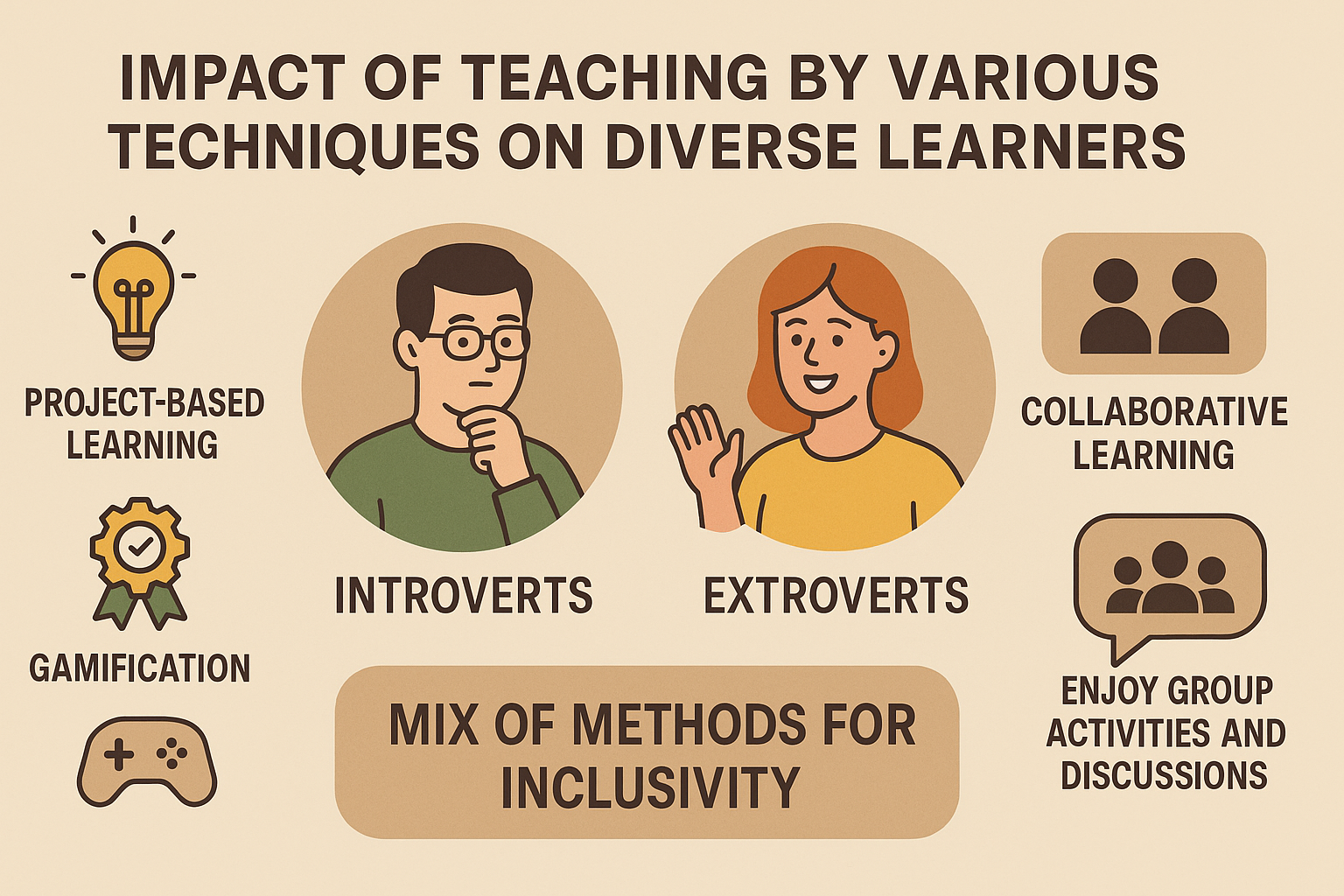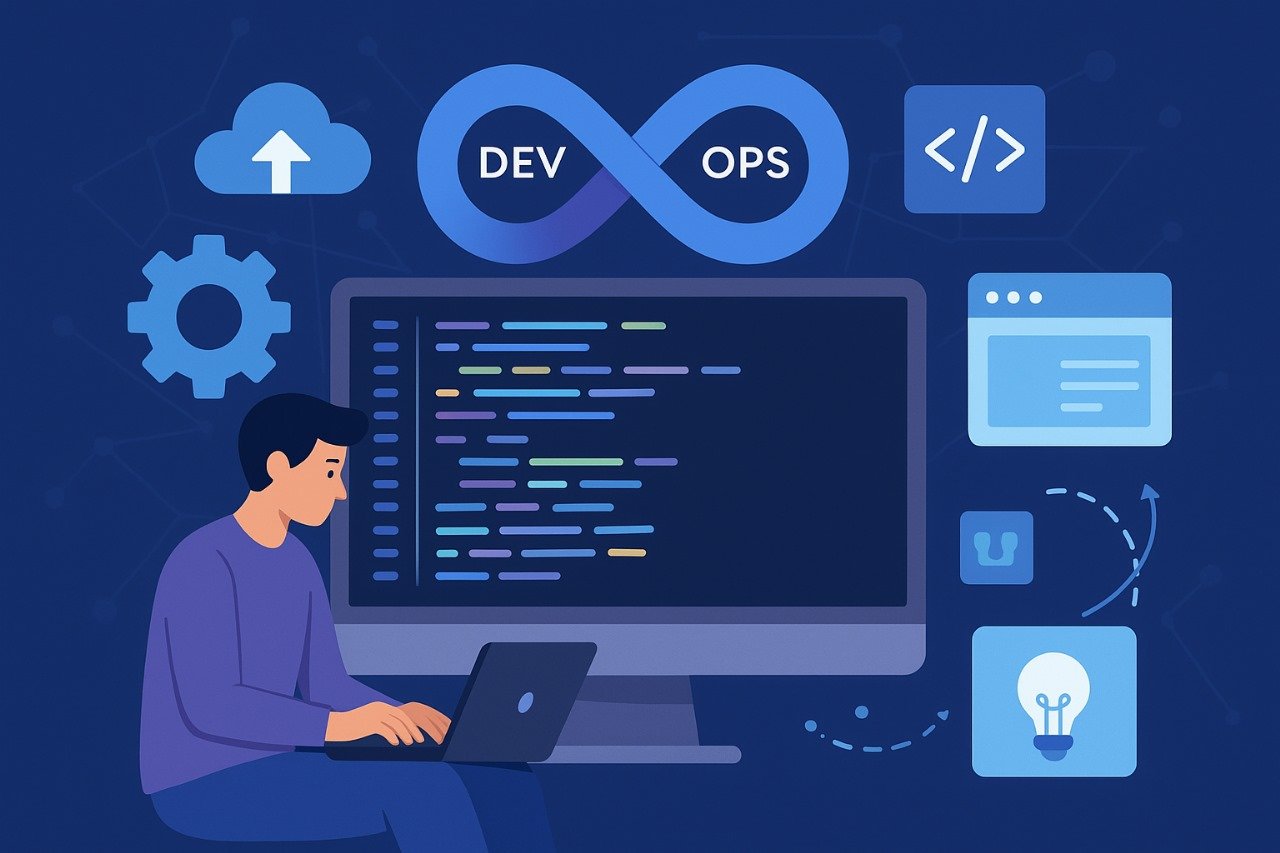Abstract
The software industry has experienced a major change in recent decades, focusing more on faster delivery, higher quality, and stronger teamwork. Traditionally, software development centered on creating and maintaining applications, while DevOps appeared as a cultural and technical shift to connect development and operations. This paper examines the link between software development and DevOps, looking at their evolution, methods, tools, benefits, challenges, and future outlook. By adopting DevOps practices into the software development process, organizations boost productivity, reliability, and scalability, helping them stay competitive in the digital economy.
1. Introduction
The demand for digital solutions has reached unprecedented levels, driven by advancements in cloud computing, artificial intelligence, and global connectivity. Software is no longer static; it must evolve continuously to meet user expectations, security requirements, and business objectives. Traditional software development approaches often faced challenges due to siloed teams, delayed releases, and poor communication between developers and operations engineers.
To address these issues, DevOps was introduced as both a cultural and technological movement, focusing on collaboration, automation, and continuous delivery. This paper examines how DevOps integrates with software development, highlighting methodologies, tools, benefits, and challenges. It also projects the future of DevOps in the evolving landscape of software engineering.
2. Software Development: An Overview
Definition and Scope
Software Development is the process of designing, coding, testing, and maintaining software applications. It involves multiple stages defined by the Software Development Life Cycle (SDLC), including requirements gathering, system design, implementation, testing, deployment, and maintenance.
Traditional Methodologies
- Waterfall Model: A linear and sequential process where progress flows through stages without iteration.
- Agile Methodology: Iterative and incremental, emphasizing flexibility, collaboration, and rapid delivery.
- Scrum and Kanban: Frameworks under Agile that promote iterative progress and continuous feedback.
Challenges in Traditional Software Development
- Long release cycles.
- Communication gaps between development and IT operations.
- Difficulty in scaling applications for modern cloud environments.
- Inadequate focus on security and automation.
3. The Emergence of DevOps
Definition of DevOps
DevOps is a cultural and technical approach that integrates development (Dev) and operations (Ops) teams to enable continuous integration, continuous delivery (CI/CD), and automated infrastructure management. It emphasizes collaboration, automation, monitoring, and feedback loops.
Principles of DevOps
- Collaboration: Breaking down silos between teams.
- Automation: Streamlining repetitive tasks such as testing and deployment.
- Continuous Integration/Continuous Delivery (CI/CD): Ensuring code changes are frequently tested and deployed.
- Monitoring and Feedback: Real-time tracking of performance, errors, and user experience.
- Security Integration (DevSecOps): Embedding security practices throughout the development lifecycle.
4. DevOps Tools and Technologies
DevOps relies heavily on tools to automate and streamline processes:
- Version Control: Git, GitHub, GitLab for managing code changes.
- CI/CD Pipelines: Jenkins, GitHub Actions, GitLab CI/CD, CircleCI.
- Configuration Management: Ansible, Puppet, Chef.
- Containerization and Orchestration: Docker, Kubernetes for deploying scalable applications.
- Monitoring and Logging: Prometheus, Grafana, ELK Stack for system insights.
- Cloud Platforms: AWS, Azure, Google Cloud for on-demand scalability.
5. Integration of DevOps in Software Development
From Agile to DevOps
While Agile focuses on iterative software development, DevOps extends the philosophy to deployment and operations. Together, they enable end-to-end agility across the software delivery pipeline.
Continuous Integration and Continuous Delivery (CI/CD)
CI/CD pipelines automate building, testing, and deploying software. This ensures:
- Faster release cycles.
- Reduced human errors.
- Early bug detection.
Infrastructure as Code (IaC)
Using tools like Terraform and AWS CloudFormation, infrastructure can be managed programmatically, enabling consistent environments and rapid scalability.
Security and Compliance
DevOps integrates DevSecOps, embedding security scanning, compliance checks, and vulnerability detection directly into the pipeline.
6. Benefits of DevOps in Software Development
- Faster Delivery: Continuous integration ensures rapid deployment of features.
- Improved Quality: Automated testing reduces bugs and enhances reliability.
- Scalability: Containerization and cloud integration support global scalability.
- Cost Efficiency: Optimized resource usage reduces operational costs.
- Enhanced Collaboration: Shared responsibility fosters communication and innovation.
- Resilience and Monitoring: Proactive monitoring ensures minimal downtime and quick incident resolution.
7. Challenges in Implementing DevOps
Despite its benefits, adopting DevOps presents challenges:
- Cultural Resistance: Transitioning from siloed teams to collaborative models requires mindset changes.
- Tool Overload: Managing a complex toolchain can become overwhelming.
- Skill Gaps: Teams need training in automation, cloud computing, and CI/CD practices.
- Security Risks: Increased deployment frequency can introduce vulnerabilities if not managed properly.
- Integration with Legacy Systems: Older infrastructures may not align easily with DevOps practices.
8. Case Studies
Netflix
Netflix is a pioneer in DevOps practices, utilizing microservices architecture, CI/CD pipelines, and chaos engineering to ensure scalability and uptime for millions of users worldwide.
Amazon Web Services (AWS)
AWS leverages DevOps for rapid feature deployment, providing cloud-based services that enable global businesses to adopt DevOps practices easily.
Spotify
Spotify uses Agile and DevOps together to continuously improve its music streaming platform, focusing on automation, rapid feedback, and user-centered development.
9. The Future of Software Development and DevOps
The integration of DevOps into software development continues to evolve:
- AI and Machine Learning in DevOps (AIOps): Automating monitoring, anomaly detection, and predictive analysis.
- Serverless Computing: Reducing infrastructure management by focusing only on application logic.
- Edge Computing: Bringing computation closer to users for reduced latency.
- Low-Code/No-Code Platforms: Enabling faster development with pre-built templates and automation.
- Enhanced Security with DevSecOps: Security will remain a top priority, with more robust AI-driven threat detection systems.
10. Conclusion
Software Development and DevOps are no longer separate disciplines but complementary approaches that enable modern organizations to remain competitive. By embracing DevOps practices—automation, CI/CD, IaC, and continuous monitoring—software development teams achieve faster delivery, higher quality, and improved collaboration. While challenges such as cultural resistance and security risks remain, the long-term benefits far outweigh the drawbacks.
The future promises deeper integration of AI, automation, and cloud-native practices, ensuring that software development remains dynamic, scalable, and secure. Organizations that adopt and refine DevOps practices will be best positioned to thrive in the rapidly changing digital ecosystem.
Other Blogs

Rozgar Mela by PM Narendra Modi: A Strategic Tool for Youth Employment in India

Impact of Teaching by Various Techniques on Diverse Learners: Insights from an Experienced IT Faculty



















